Ryan Hall's Blog, page 150
July 13, 2017
5 Reasons Why You Should Run A Race Through Wine Country

Photo: Destination Races

Photo: Destination Races
It’s pretty obvious why most runners sign up for a wine-related race—to drink wine after crossing the finish line! While that is definitely the best motivation, these events have even more to offer than just red, white or rosé. Here are five reasons to run a wine country race.
The Vacation
Since most of us don’t reside among vineyards, a race through wine country becomes the perfect excuse for a vacation. The beauty of any wine producing area makes it the perfect getaway with a partner or for a group of friends. Just be sure that your race falls at the beginning of your trip. It’s a bit difficult to run your best if you’ve spent the days prior at wine tastings—but we aren’t here to judge if that’s your plan!
The Scenery
Navigating a course through vineyards, farms and small towns is a beautiful change from city marathons. You may encounter a few more hills than usual, but the views from the top make the climbs worth it. The beauty of the area helps to keep runners relaxed and engaged throughout the race.
“Running amongst the vineyards is a very zen-like experience. No cars or tall buildings,” says Matt Dockstader, owner of Destination Races, which produces a series of boutique-style events hosted in North American wine regions. “Traveling by foot is the best way to experience true wine country. And the sensory experience changes depending upon the time of year and state of the grapes.”
The Restaurants
Good wine and quality food always go together. So it’s no surprise that most wine producing regions are also home to amazing restaurants. Given the importance of agriculture in these areas, many establishments are focused on seasonal eating and farm-to-table cuisine. From coffee shops to casual spots to fine dining, there are delicious options to fit any runner’s tastes or budget. Choosing a pre and post-race feast is sure to be a lot of fun.
The Relaxed Race Vibe
If you’re looking for a small, relaxed event, then head to wine country. Many of these races limit the amount of participants, which lends to a calmer feel. The events welcome all levels of runners, from those looking to nab a serious PR to first timers hoping to just enjoy the experience.
“You can of course make any race as serious as you want, but being in wine country kept me from getting too anxious or nervous,” says Ali Feller, host of the Ali on the Run Show podcast. “Everyone there seemed so happy, so laid back and so eager to get to that awesome after-party. Who can possible stress over splits and gels when you’re surrounded by vineyards and pinot grigios-to-be?”

Photo: Destination Races
The Other Events
While the race may be the main attraction, there are often many other events sponsored by the organizers, such as pre-race dinners, wine tasting at the expos, and amazing post-race parties.
“We have events within the event designed to showcase the area, such as a welcome receptions, a race dinner and other events at wineries and other unique venues,” says Dockstader of his events. “You’re getting two events—race and wine festival—for the price of one.”
Many of these races also come with a guide of vineyards in the area, so you can easily plan post-race excursions. Bring your race bib or medal in case any wineries have deals for race finishers.
RELATED: Serving Up Running Shoes and Fresh Microbrews
The post 5 Reasons Why You Should Run A Race Through Wine Country appeared first on Competitor.com.
Katherine Switzer Preps for NYC Marathon at Rock ‘n’ Roll Chicago

Katherine Switzer crossing the finish line at this year's Boston Marathon. Photo: Photorun.net
Right after she made history as the first woman to officially run the Boston Marathon in 1967, a reporter asked Kathrine Switzer if she was “one and done” with the race distance. Her response? “I plan to be the 80-year-old woman you read about who’s still running marathons.”
True to her promise, at the age of 70, Switzer is still going strong and inspiring older runners everywhere to continue or get started in the sport. Not only did she run Boston again this past spring to mark the 50th anniversary of her monumental achievement, but she plans to run the New York City Marathon in November as well.
“I surprised myself at Boston because I went into it tired,” she says. “I ran well and I didn’t want to let my Boston fitness go, so I decided to run New York.”
En route to the marathon, this weekend she’ll be tackling a 5K at the Humana Rock ‘n’ Roll Chicago. Her time there will also include an appearance at the expo on Saturday afternoon. “One of the reasons I’m involved with Humana and Rock ‘n’ Roll [Marathon Series] is that if we can show older runners that our sport can be engaging, social, and fun, we can keep them at it,” she says. “I’m trying to be a good example.”
Her message goes beyond the longevity of life through fitness, though. “I want people to see that they can extend the quality of their lives, not just the length,” she explains. “I’m approaching this 5K as a fun event, one that is accessible to anyone, at any age.”
This is especially true of shorter races like 5Ks and 10Ks. “For many women in particular, finding the time to train for half or full marathons can be tough,” Switzer says. “Staying fit through shorter distances is a good option when life is too busy for the longer races.”
Shorter distances are just where Switzer wants to be racing right now before she begins gearing up for New York City in earnest. Her marathon training has changed over the years as she embraces a gentler approach to running. “Back when I was really competitive, I put in 100-mile weeks,” she says. “Getting ready for Boston, my physician recommended I train every other day. That was a tough pill to swallow, but I’ve been amazed at how good I feel after those recovery days.”
Switzer will be bringing a few of her 261 Fearless ambassadors along with her to Chicago, representing the charity she started this year. The organization seeks to empower women to connect and take control of their lives through running. Using a series of non-competitive running clubs and communications channels, Switzer’s organization provides networking, support and education to women worldwide.
No matter where she is in life, Switzer continues to be an excellent ambassador for the sport she loves. If she keeps going the way she is now, there’s no doubt she’ll be making good on her intentions to run well into her twilight years.
RELATED: Wear Blue Is Honoring Military Lives At Rock ‘n’ Roll Chicago
The post Katherine Switzer Preps for NYC Marathon at Rock ‘n’ Roll Chicago appeared first on Competitor.com.
Build Endurance With This Power Yoga Sequence For Runners
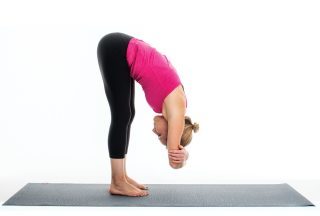
Power yoga, a derivative of Ashtanga yoga, is a fitness-oriented practice that can help build endurance, stamina and strength through vigorous sequences of flowing yoga poses that emphasize total-body athleticism. In synchronizing your breath with the movements, it can also help you relieve stress.
What’s more, you don’t need to be an experienced yogi to complete the following power yoga workout. You can graduate to more challenging sequences as you practice and build strength.
In the following power yoga session, we start with easier moves as a warm-up, then go into the workout sequence, which you can repeat two to five times.
RELATED: Unlock Tight Hips in 3 Moves

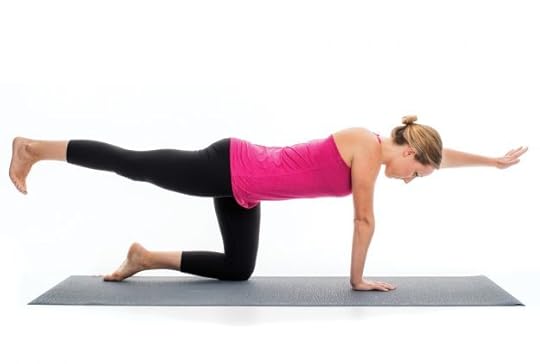

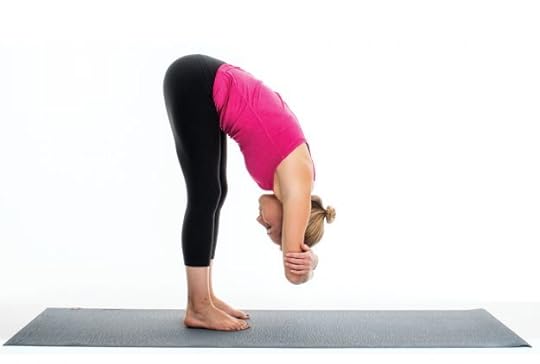


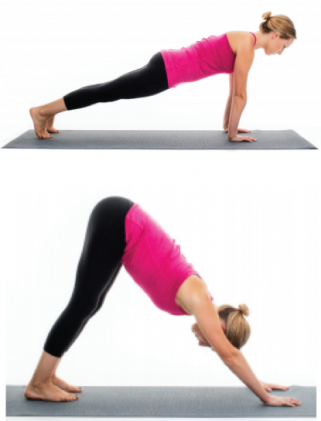

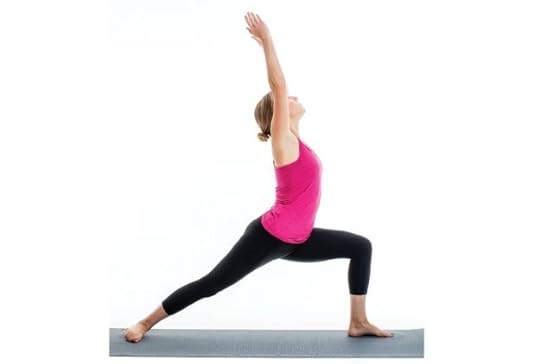
The post Build Endurance With This Power Yoga Sequence For Runners appeared first on Competitor.com.
Wear Blue Is Honoring Military Lives At Rock ‘n’ Roll Chicago Half
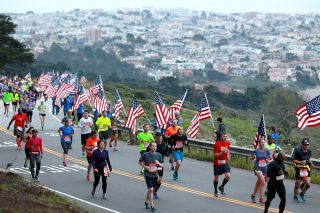
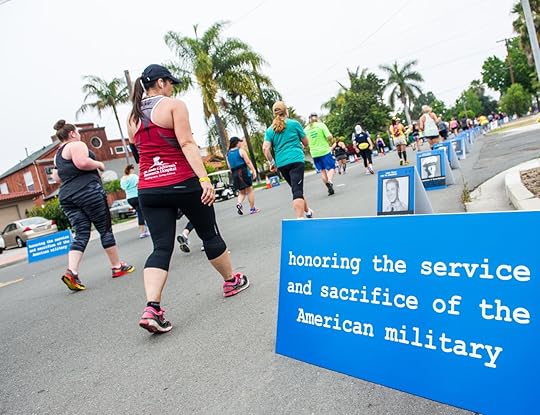
A wear blue Mile display at last year’s Rock ‘n’ Roll San Diego race. Photo: Ryan Bethke
It is a 1-mile stretch unlike any other in road racing. Heartbreaking, emotional, poignant, moving.
First, come the 18-inch by 24-inch posters sitting atop A-frame stands. The posters, one on each side of the street, feature a tight facial shot of a deceased United States military service member, their name, date of death, age and if they were killed in action.
Then come the 3 feet by 5 feet U.S. flags on each side of the street, one for every lost military member. The flags are often held by family members of the late soldiers.
It’s called the wear blue Mile and has been on display at Rock ‘n’ Roll Marathon Series races in Seattle, Washington, D.C., San Diego and San Francisco. Come Sunday, about 3½ miles into the race, in the heart of downtown, the wear blue Mile will be on display for the first time at the Humana Rock ‘n’ Roll Chicago Half Marathon.
Seventy-five service members will be honored.
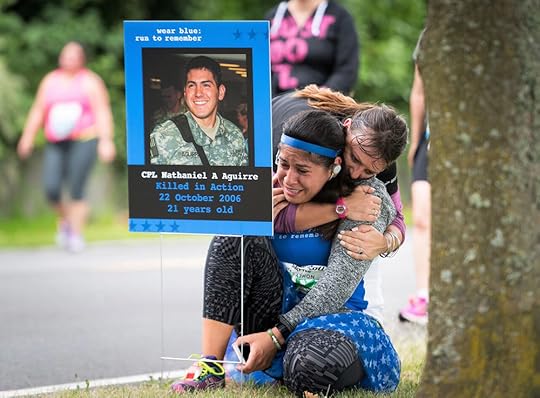
Photo: Rod Mar
Alex Bennett, vice president of events for the Rock ‘n’ Roll Marathon Series, has driven past every wear blue Mile display the organization has staged. Typically, he’s in the lead vehicle or press truck, making sure there are no course issues.
“Every time it’s just as moving as it was the last time,” Bennett says. “It’s amazing to see those families out there supporting our runners but also remembering the fallen soldiers.”
The wear blue Mile is Lisa Hallett’s creation. Hallett’s husband, Army Capt. John Hallett, was killed in Afghanistan on Aug. 25, 2009. At the time, the Halletts had three children, boys 3 and 1, and a 3-week-old daughter John never met.
In January of 2010, Hallett organized a running support group of 15 people where she lives in Dupont, Wash.
“Military families need infrastructure to support them in healthy ways through these challenges,” says Hallett.
Since that first support group, it has now grown to 44 similar running communities in the United States. The program is called wear blue: run to remember.

Photo: Photorun.net
Hallett will be in Chicago and is still heavily involved in the program.
“Even though my family has moved forward in happy, healthy ways, you never stop missing and loving your spouse,” says Hallett. “Not a day goes by that I don’t wish he was with us, that he was part of us, seeing our children grow.”
The Humana Rock ‘n’ Roll Chicago Half Marathon will be the 28th road race with a wear blue Mile experience. When asked what goes through her mind when she sees the portraits of deceased military members and the procession of U.S. flags, Hallett says, “Every race is a little bit different.
“But when I hold my husband’s flag and the first runner comes through and salutes me or makes eye contact, my heart just soars and the flag is not a flag anymore. It’s John. It’s the celebration of who he was, how he lived,” she adds. “I’m connected to this runner. We’re sharing John’s life. It’s powerful and uplifting to me, a reminder I’m not alone in this journey of moving forward in the aftermath of him passing away.”
On Sunday, the wear blue Mile hits The Windy City. Know this: the scene will be memorable.
The post Wear Blue Is Honoring Military Lives At Rock ‘n’ Roll Chicago Half appeared first on Competitor.com.
July 12, 2017
Cross-Training Classes That Are Great For Runners
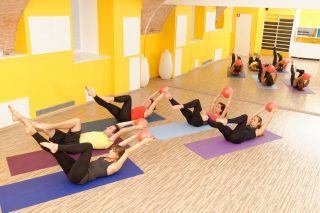
Running may always be our number one sport, but it’s always good to try new things. If you are looking to add something new to your workout routine, there are many other activities waiting for you! Cross-training provides lots of opportunities to put new demands on your body.
Other exercises introduce movements that use muscles you may not focus on while pounding the pavement. New stimuli will also improve your overall conditioning. Cross-training also increases the other aspects of your fitness, such as strength and flexibility, which also benefit your running.
There are certain classes at your gym that provide great cross training options that can benefit your running:
Bootcamp
A military-style workout, this class blends bodyweight exercises with interval training and strength training.
Spin
A cycling class is a phenomenal choice for cardiovascular exercise that will strengthen the lower body without impact.
Tabata
An interval-training workout with a concrete structure of four minute intervals with eight rounds. Short and intense, this workout will be sure to get your heart pumping.
Kickboxing
This workout is just what it sounds like. These are classes that blend martial arts moves with an intense aerobic beat. Kickboxing is a fantastic cardiovascular workout, and has the benefits of toning your entire body, while adding the dimensions of coordination and flexibility.
Yoga
This class is a great way to work on your flexibility and strength, while incorporating meditative practices that can relax and refocus your mind.
RELATED: Use Yoga To Balance Out Your Run Training
Pilates
This class does it all. Pilates improves flexibility, builds core strength and develops control and endurance, while improving coordination and balance.
TRX
A must-do workout for strength training and endurance. You rely solely on your own bodyweight for resistance and can increase difficulty as you progress. There’s always room for more!
Barre
Barre uses small controlled movements that strengthen your core strength and help your posture. Think ballet as a base for this one.
RELATED: Strength Train Like A Dancer—The Barre Circuit Workout
The post Cross-Training Classes That Are Great For Runners appeared first on Competitor.com.
An Inside Look At How Salomon’s Customizable S/Lab ME:sh Shoes Are Built
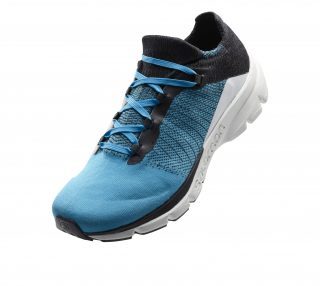
If you could incorporate the colors, cushioning and support you wanted in a running shoe, down to the heel drop and color of the eyelets for the laces, what would you do? You better decide! With the new Salomon S/Lab ME:sh shoes, you’ll have your chance to build a shoe from the bottom up, with options ranging from semi-custom to completely individualized fit.
Not only will customers get exactly what they want, the streamlined process is more socially responsible, with less waste and reduced shipping costs. It’s also fast. A pair of shoes can be made from beginning to end in just under 2 hours. S/Lab ME:sh shoes are currently available in France, but will go global soon, with production in local markets in the near future.
Click through to get a sneak peek at the process, and start planning your individualized design!
RELATED: 3 Shoes That Offer Custom Fit To Runners
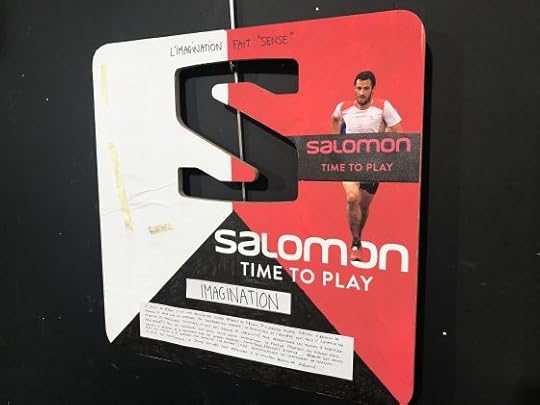
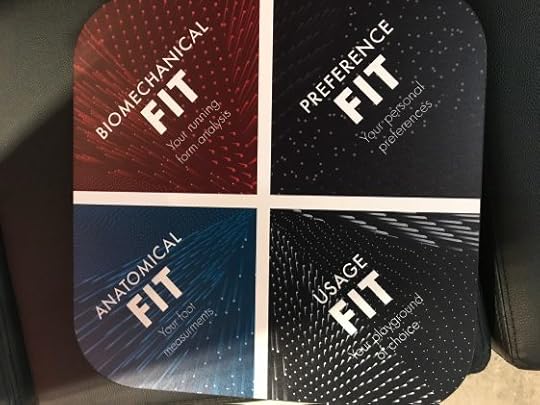

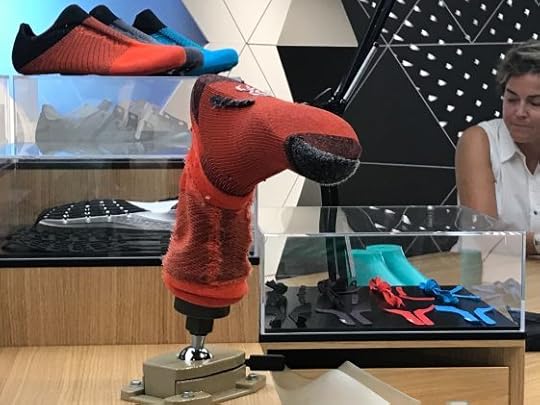
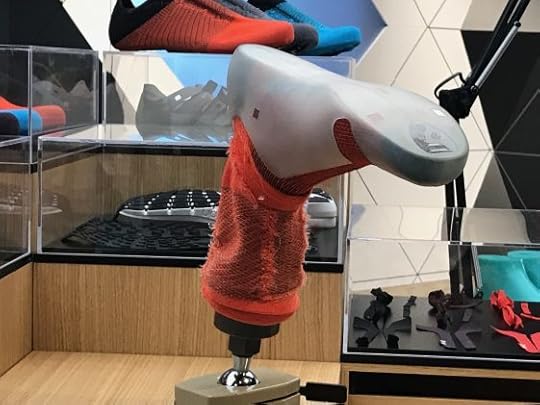
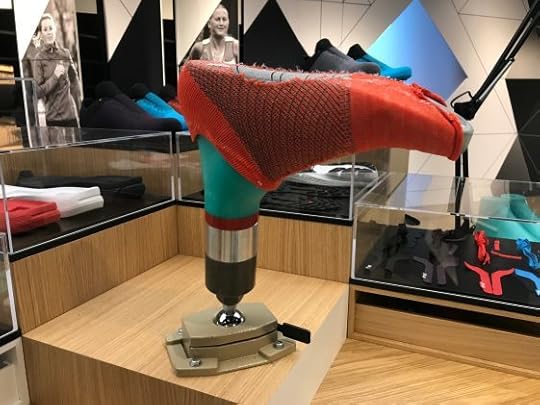
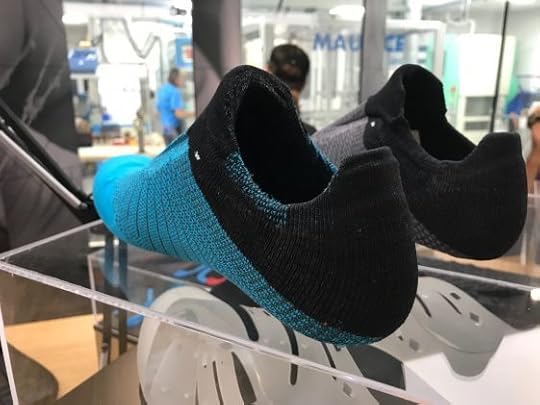
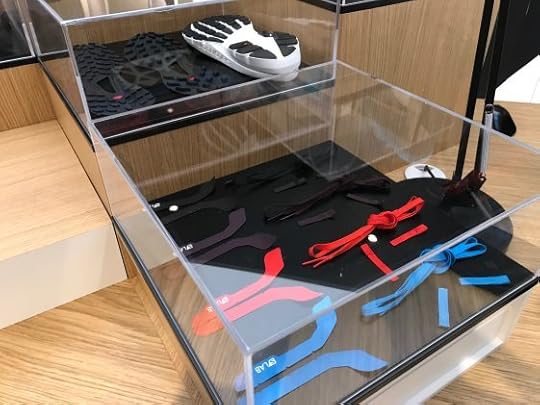
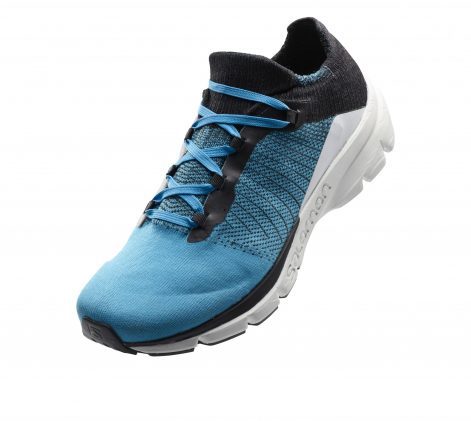
The post An Inside Look At How Salomon’s Customizable S/Lab ME:sh Shoes Are Built appeared first on Competitor.com.
Your DNA Can Hold The Key To The Perfect Training Strategy
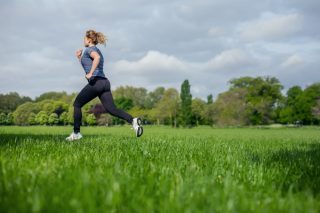
If I want to build strength and increase muscle mass, I should be during a high-volume form of resistance/strength training with 16-32 sets per workout and 12-15 reps per set. How do I know this? My genes told me.
You see, it all started with FitnessGenes and some spit. How does it work exactly? They send you a test kit and you send them your saliva. From there, your sample is sent to a lab in the UK to be processed and your DNA is extracted. From there, your results are analyzed and you receive an e-mail to log in to your profile, where you get detailed fitness and nutrition recommendations based on a combination of your lifestyle profile and your genes.
The results are detailed. There were 41 separate detailed results outlined in my profile, from the gene for endurance to the gene for vascular function and more. Each result is broken down in an easy-to-understand way (so, if you never studied genetics, don’t worry).
RELATED: Why The Same Training Plan Works Differently For Different People
From there, FitnessGenes offers free training strategies and, should you want to take it further and be guided, optional training and nutrition plans you can buy. Should you not be ready to make that investment, however, the amount of information provided from the test is more than enough to get started on your own and receive the free guidance available.
To just receive the DNA Analysis, it is $199. The information you receive can not only help you devise a training strategy or guide you as you get started in a fitness plan, it can also actually benefit your overall health and wellbeing. For example, I learned that I should monitor my saturated fat intake, because I have two copies of the allele associated with a higher BMI in response to a diet consisting of high levels of saturated fats than other genetic variants.
So if you’ve spent time unsuccessfully trying to determine what training program works best for you, the answer could have been inside of you all along.
The post Your DNA Can Hold The Key To The Perfect Training Strategy appeared first on Competitor.com.
Three-Time Olympian Dathan Ritzenhein Joins Hansons-Brooks
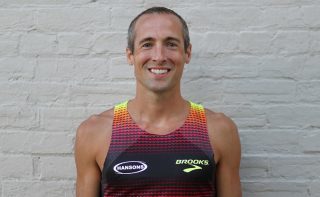
Dathan Ritzenhein shows off his new Hansons-Brooks kit. Photo: Courtesy of Brooks
(c) 2017 Race Results Weekly, all rights reserved
Three-time Olympian Dathan Ritzenhein of Belmont, Mich., has joined the Hansons-Brooks Original Distance project and will be coached by Keith and Kevin Hanson, Brooks Running announced today. Ritzenhein, 34, had previously endorsed Nike since wrapping up his collegiate career at the University of Colorado in 2004. Ritzenhein’s Nike contract expired at the end of 2016.
“I am absolutely thrilled to be joining forces with The Hansons-Brooks Original Distance Project,” Ritzenhein said in a statement. “Having known Keith and Kevin for 20 years, there is nobody I trust and respect more to help guide me to new heights in the marathon while I chase my fourth Olympic team.”
Ritzenhein is a Michigan native, originally from Rockford, about 10 miles north of Grand Rapids. He lived in the Portland, Ore., area while running for the Nike Oregon Project, but moved back to Michigan three years ago to be closer to family. His wife, Kalin, is also originally from Michigan. The couple have two children.
Ritzenhein has enjoyed success running cross country, the roads or the track, but has often struggled with injuries. As a junior athlete, he won the bronze medal at the 2001 IAAF World Cross Country Championships in Ostend, Belgium, in horribly muddy conditions. During his collegiate career, he won five Big 12 titles (indoors and outdoors combined), and was the NCAA cross-country champion in 2003. In the pro ranks he won the USA cross-country title three times (2005, 2008 and 2010) and won the bronze medal at the 2009 IAAF World Half-Marathon Championships. He also made the 2004, 2008 and 2012 USA Olympic teams, the first at last in the 10,000 meters and the second in the marathon. He did not qualify for the 2016 Olympic Games.
RELATED: The 2024 and 2028 Olympics are Heading to Paris and Los Angeles
Ritzenhein, however, is probably best known as a marathoner. After a difficult debut at the 2006 New York City Marathon (he ran 2:14:01 and called the final four miles “undescribable” because of the pain) he went on to finish ninth at the 2008 Beijing Olympic Marathon, and eventually ran a personal best of 2:07:47 at the 2012 Chicago Marathon. In his last marathon, last November’s New York City Marathon, Ritzenhein dropped out with a foot injury. He also dropped out of the 2016 U.S. Olympic Trials Marathon.
The Hansons-Brooks program is marathon-focused, so Ritzenhein should fit right in.
“Welcoming Dathan back to Michigan and to our team is an opportunity we couldn’t pass up,” explained Kevin Hanson in a statement. “We feel that he has more to give in the marathon, and we’re ready to get to work and see how far we can go together.”
RELATED: Why I Run—Dathan Ritzenhein
The post Three-Time Olympian Dathan Ritzenhein Joins Hansons-Brooks appeared first on Competitor.com.
The 2024 and 2028 Olympics are Heading to Paris and Los Angeles

This story originally appeared on Womensrunning.com.
The big question now is, which city will host which year? According to ABC News, it’s up to Los Angeles and Paris, the two options for Olympics following 2020 Tokyo, to decide. Other bidding cities dropped out due to the massive price tag attached to creating the infrastructure to host the games. Rio de Janeiro was left with around a $12 billion tab after last summer’s Olympics.
Paris, who hosted the games 100 years ago come 2024, will most likely take their centennial anniversary, while Los Angeles will probably host the 2028 Olympics. It would be their third time hosting the summer games and the first time since 1996 that the games are held in the United States. (Atlanta hosted them last time.) The International Olympic Committee is expected to award both cities with a bid at the same time in September, pending that the French and the Americans can decide amongst themselves who gets which year.
RELATED: 2020 U.S. Olympic Track And Field Trials Headed To Mt. SAC
The rare decision to announce two host cities at once is part of a larger effort to encourage other cities to continue vying to play host. The massive financial undertaking has been a deterring factor; many pour a lot of funds into just campaigning, only to lose both the bid and the interest to try again. The good thing about these final two contenders? They both have somewhat existing facilities to hopefully offset costs and inspire others to want to join in on the fun for 2032 and beyond.
The post The 2024 and 2028 Olympics are Heading to Paris and Los Angeles appeared first on Competitor.com.
July 11, 2017
The Lure Of The Wild And Remote Bears Ears National Monument
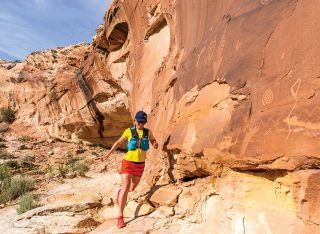 Running Through History
Running Through HistoryImmense mesas punctuated by sandstone buttes and the occasional arch rising into the sky: This is Bears Ears National Monument in southeastern Utah. To some the desert environment may appear harsh and unwelcoming—a place to pass through on the way to the Grand Canyon or Moab—but that is why lacing up and exploring the area by foot is the key to unlocking the magic of its rugged canyons, winding waterways, countless petroglyphs and ancestral ruins.
However, much of this undeveloped, precious wilderness could be lost. Currently, the national monument status of Bears Ears (and 26 other culturally significant and wild lands established under the Antiquities Act of 1906) is being reviewed by the U.S. Department of the Interior.
Ultrarunner Luke Nelson ran through the park last fall. After his experience, he became an advocate for preserving the area’s culture and national monument status. In May, he joined sports nutrition company GU Energy and the local Four Corners School to help educate others about the land’s history, its unique qualities and his connection with the area.
“As the distractions of daily life are lost in the miles, the natural world opens its secrets. It is in that space where I found my place and connection to Bears Ears,” Nelson says.
RELATED: Behind The Trail Running Initiative Advocating To Protect Public Lands
What You Need To Know
With tens of thousands of archaeological sights, and miles upon miles of trails, the 1.35 million acres of Bears Ears National Monument can infiltrate your psyche, like the area’s red sand does the fabric of your clothes. As a national monument, Bears Ears—named after two area buttes that look like their namesake—lacks a comprehensive trail-management plan and ever-present rangers like those of nearby national parks such as Arches or the Grand Canyon. Some of those aspects may come with time, but for now the uncrowded remoteness is part of the allure of Bears Ears.
When running area trails, come prepared with plenty of water and a map—and let someone know where you’re headed. Also double-check trail markings, as many of these routes have been traveled for more than one thousand years, with some of the ancient markings still intact. In fact, Bears Ears is home to tens of thousands of archaeological sights (like the petroglyphs, left) connected by canyons, waterways and trails.


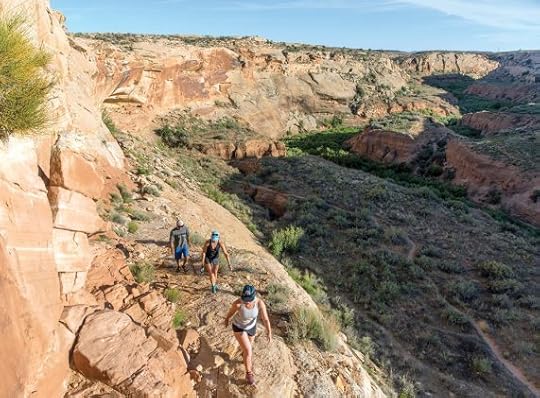




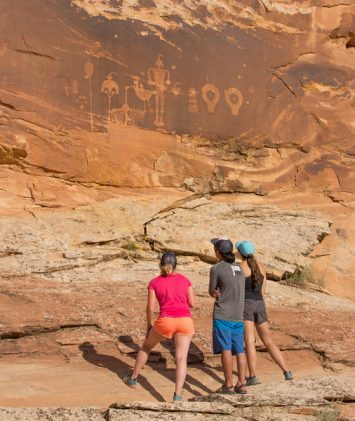
The post The Lure Of The Wild And Remote Bears Ears National Monument appeared first on Competitor.com.
Ryan Hall's Blog
- Ryan Hall's profile
- 21 followers



